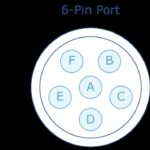Buying a used car can be a smart financial decision, but it also comes with inherent risks. You might stumble upon a gem, or you could unknowingly inherit a vehicle riddled with hidden problems. One of the smartest moves you can make before committing to a used car purchase is to perform a pre-purchase inspection, and at the heart of this inspection should be an OBDII scan. Using the best OBDII scanner can be a game-changer, potentially saving you thousands of dollars and countless headaches down the road.
Why is an OBDII scan so crucial? Think of it as a digital health check for the car’s engine and related systems. The onboard diagnostics system (OBDII) is standard in most cars manufactured since 1996, and it constantly monitors various components for malfunctions. When something goes wrong, the system often stores diagnostic trouble codes (DTCs). An OBDII scanner allows you to retrieve these codes, giving you a peek under the hood – electronically speaking – without needing to be a mechanic.
Imagine this: you’re looking at a used car that seems perfect. It looks clean, drives smoothly during a short test drive around the block, but appearances can be deceiving. Hidden issues, like a developing transmission problem or intermittent sensor failures, might not be immediately obvious. This is where an OBDII scanner becomes your secret weapon. By plugging in a scanner, you can quickly check for stored or pending DTCs. These codes can reveal problems that the seller might not even be aware of, or worse, might be trying to hide.
For instance, a “check engine light” that’s been recently cleared won’t tell you anything, but an OBDII scan can reveal “pending codes” – codes that haven’t yet triggered the light but indicate a problem is brewing. As one used car buyer wisely pointed out, “It’s a disqualifier, really. It’s so you don’t waste time with the car, taking it to a mechanic, etc. when you wouldn’t have had to had you done the scan check.” Discovering a serious code during a scan can save you the time and expense of a mechanic’s inspection on a car that’s already showing red flags.
Choosing the “best” OBDII scanner depends on your needs and budget. For a basic pre-purchase inspection, you don’t necessarily need the most expensive, professional-grade scanner. Many affordable, user-friendly OBDII scanners are available that connect to your smartphone via Bluetooth. These scanners, when paired with a suitable app, can read and clear codes, and often provide helpful information about what the codes mean. Some even offer live data monitoring, allowing you to see real-time readings from various sensors as the engine runs.
However, keep in mind that an OBDII scan is just one part of a thorough used car inspection. As crucial as it is, it doesn’t replace a comprehensive test drive and visual inspection. Always take the car for an extended test drive, including highway speeds, as some issues only become apparent under specific driving conditions. “Many cars seem fine a low speed but only when you get it up to highway speeds can you feel or hear certain kinds of problems,” as another experienced buyer noted. Test the brakes, listen for unusual noises, and check all the car’s features, including the air conditioning.
Furthermore, don’t underestimate the importance of a visual inspection. Check under the hood for leaks, inspect the tires for wear, and examine the car’s body for signs of damage or rust. If you’re not mechanically inclined, consider taking the car to a trusted mechanic for a pre-purchase inspection, especially if the OBDII scan reveals any concerning codes.
Finally, be wary of sellers who are reluctant to let you perform an OBDII scan or a thorough test drive. As the original advice suggests, “anyone who won’t let you give it a good test drive or scan it is selling you a piece of junk.” A confident seller with nothing to hide should readily agree to these reasonable requests.
In conclusion, investing in even a basic OBDII scanner is a smart move for anyone in the used car market. It empowers you with valuable information, helps you avoid potential lemons, and can give you confidence in your used car purchase. Combine the insights from an OBDII scan with a thorough test drive and visual inspection, and you’ll be well-equipped to make an informed decision and drive away with a used car that’s a reliable value, not a costly mistake.

